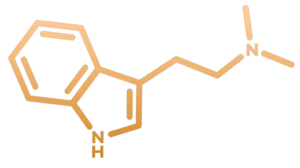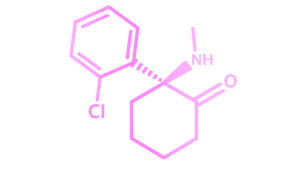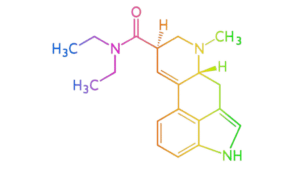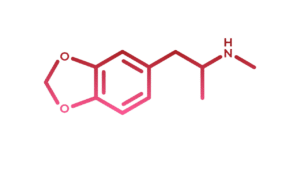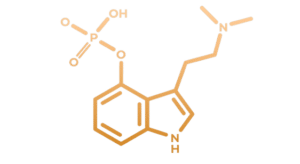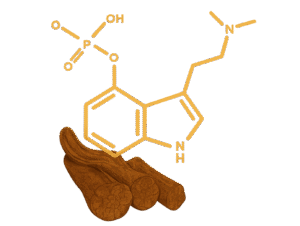Ayahuasca from the Amazon
Ayahuasca is a psychoactive brew traditionally used by indigenous tribes in the Amazon region of South America. The origins of ayahuasca likely date back thousands of years, when indigenous tribes in the Amazon used it for healing, spiritual and religious rituals, and to connect with their ancestors and the universe. It is composed of the banisteriopsis caapi plant and other plants, such as chacruna, that contain dimethyltryptamine (DMT).
These plants are harvested, brewed and served by native shamans or healers during ceremonies where participants vomit and experience visions that can help them with their personal development or in finding answers to life's questions. The use of ayahuasca has spread to other parts of the world in recent decades and is now seen as a potential tool in the treatment of anxiety, depression and addiction.
The very first ayahuasca traditions prescribed that only the shaman drank ayahuasca and sang songs for those seeking healing. Later, due to the influence of Western customers, the custom changed to a ceremony in which everyone drinks ayahuasca.
What are the active ingredients?
During traditional ayahuasca ceremonies, not all ayahuasca brews contained DMT. In some variants the plants are omitted or replaced by other plants.
However, the reason DMT is now considered important is because it is the most active substance in ayahuasca and is responsible for the most intense hallucinations. Furthermore, it is considered the most important component for the healing effects of the drink, as it can open the mind to new insights and perspectives.
However, traditional users of ayahuasca believe that it is the combination of all the plants present that determines the strength of the drink or that the banisteriopsis caapi plant alone can bear the name ayahusca. They consider ayahuasca to be a sacred medicine that can heal and liberate body, mind and soul, regardless of which plants are used.

DMT in ayahuasca
DMT is a tryptamine and neurotransmitter that acts on the serotonin receptors in the brain. As shown in the image above, DMT has a molecular structure that resembles the neurotransmitter serotonin and the psychedelic psilocin (from truffles and magic mushrooms).
When DMT is smoked, it produces a strong and short trip that lasts about 10-30 minutes. DMT is not active orally, but it is active when taken as an ayahuasca mixture. In the form of ayahuasca the trip takes an average of 6 hours. It can have various visual and audiovisual effects, such as patterns and geometric shapes, changes in color and intensity of light and unreal experiences. Some people also experience a sense of connection with the universe and spiritual or mystical sensations.
In the brain, DMT acts on the serotonin receptors, especially the 5-HT2A receptor. This can lead to changes in perception, mood, consciousness and emotions. The activity in the brain resembles the activity during dreaming, which may explain the hallucinogenic effects.
Banisteriopsis caapi as MAOi
DMT is a relatively unstable substance that is broken down in the gastrointestinal tract by the MAO enzyme. Banisteriopsis caapi contains MAOIs that block this enzyme and ensure that DMT remains active when ingested. This allows DMT to cross the blood-brain barrier and become psychoactive. Blocking the MAO enzyme by banisteriopsis caapi also ensures that neurotransmitters, such as serotonin, remain active for longer, which contributes to the psychoactive effect of ayahuasca. So it is the combination of DMT and MAOIs from banisteriopsis caapi that makes the modern experience of ayahuasca possible.
The ayahuasca ceremony
The ayahuasca ceremony is led by a shaman, who is responsible for preparing the ayahuasca and guiding the participants during their journey. The shaman sings songs called icaros. These are traditional songs used to provide spiritual healing and protection and to guide the journey. The purpose of the ceremony is to promote healing and spiritual growth, and the ayahuasca is seen as a powerful tool for unlocking emotional blocks and revealing inner wisdom.
Traditionally, the participants remained completely sober and only the shaman drank ayahusca. This was because the shaman was considered to be filled with spiritual power and knowledge and was considered the only one capable of interpreting the visions and messages of the plant spirits. .
However, in some traditions, experienced participants were also allowed to take a small amount of ayahuasca to help them connect with the plant spirits. However, this was only allowed after they had undergone thorough preparation, such as following a strict diet and abstaining from sexual activity.
Today there are many variations on these traditions and there are ayahuasca ceremonies in which both the shaman and the participants take ayahuasca. These modern practices are not true to the ancient traditions and it is important to prepare properly for such ceremonies.
The ayahuasca diet
Due to the presence of MAOIs, a special diet is required to avoid complications. Tyramine is a substance commonly found in foods such as cheese, red wine, beer and smoked meats. When tyramine is taken with MAOIs, such as in ayahuasca, it can lead to increased blood pressure and potentially life-threatening reactions. To avoid this risk, it is recommended to follow a low-tyramine diet in the days prior to drinking ayahuasca. This diet limits the intake of tyramine-rich foods and preparations that naturally contain tyramine, such as fermented foods. Following this diet can reduce the risk of a potentially dangerous interaction between ayahuasca and tyramine, increasing the chance of a safe and beneficial experience with ayahuasca.
Ayahuasca in the Netherlands
Because DMT itself is illegal in the Netherlands, the use of ayahuasca with DMT in it is also illegal. In the Netherlands, the Supreme Court confirmed this ban again in 2018. Before the ban, some religious groups, such as Santo Daime, had an exception to this ban due to their sacramental use of ayahuasca during their ceremonies. Since 2018, it has been illegal to possess, sell or hold ceremonies with ayahusca (containing DMT).
Legal and safer alternatives
The MAO inhibitors present in ayahusca cause an increased risk of health complaints. Psilocybin, on the other hand, works orally and MAOi are not necessary. If you add MAO inhibitors, you can save on the amount of psilocybin-containing mushrooms or truffles. When adding many MAO inhibitors, the trip also lasts a few hours longer. The addition of banisteriopsis caapi is therefore not necessary. All in all, the psilocybin ceremony is safer and if psilocybin-containing truffles are used, it is also legal.
If a mild MAO inhibitor is used, psiloflora may be the solution. Psiloflora is the combination of magic truffles and passion flower (passiflora incarnata). With this combination of passion flower and truffles there are fewer side effects, vomiting rarely occurs, it provides a calmer trip and there are fewer negative interactions with food, medicines and supplements. More information can be found via the buttons below.
FAQ ayahuasca
Ayahuasca is a powerful psychoactive plant blend traditionally used by indigenous tribes in the Amazon for spiritual and medicinal purposes. The main active ingredient in ayahuasca is dimethyltryptamine (DMT), a hallucinogenic compound. When ayahuasca is consumed, the DMT interacts with neurotransmitters in the brain, leading to altered states of consciousness, vivid visions and intense emotional experiences.
The MAOIs present in the ayahuasca brew allow the DMT to reach the brain without being broken down by the body's enzymes that normally break it down. This prolonged exposure to DMT can cause profound changes in thought patterns, mood and behavior, which can lead to self-reflection, insights and personal growth.
It is also believed that ayahuasca interacts with the digestive system, causing physical cleansing such as vomiting and diarrhea to occur. This is seen as a necessary part of the process, helping to release negative emotions, toxins and other substances that can block personal growth and inner healing.
Ayahuasca is considered illegal in the Netherlands. Despite its traditional use in some indigenous cultures, the psychoactive substance is classified as a Schedule I drug under Dutch law, meaning it is considered a drug of no medical or scientific value and has a high potential for abuse and dependence.
Drinking ayahuasca can pose a number of risks. Drinking the concoction can lead to severe nausea, vomiting and diarrhea. Some people may experience severe psychological reactions, including anxiety, paranoia, hallucinations, or dissociation. Ayahuasca can also cause interactions with other medicines or worsen health problems, so it is important to research beforehand whether it is safe. Ayahuasca can bring up emotional trauma or memories that are too painful to deal with without professional help.
In general, vomiting during an ayahuasca ceremony is a common experience and can be considered part of the healing processes. Ayahuasca contains powerful psychoactive substances that can have strong physiological and psychological effects on the body and mind. The nausea and vomiting may be caused by the presence of the MAOi. MAOi disrupt the functioning of some necessary processes in the body, which makes it understandable that the body has an aversion to these substances.
Yes, several people have died as a result of using ayahuasca. It is important to emphasize that ayahuasca, when prepared correctly and used under the guidance of experienced and trained shamans, is generally considered safe. However, if it is prepared incorrectly, or if misused by ignorant or inexperienced users, it can cause serious physical and psychological harm and even be fatal.
In some cases, the deaths were due to the interaction between ayahuasca and other drugs or health problems of the user. In other cases, death resulted from lack of supervision, incorrect dosage or incorrect preparation of the ayahuasca. It is therefore essential to consider using ayahuasca only under strict and safe conditions.
Ayahuasca is a hard drug under Dutch law. It is on list 1 in the Opium Act and is therefore illegal.
Ayahuasca is traditionally made from two main ingredients: the Banisteriopsis caapi vine and the leaves of the Psychotria viridis plant. The vine contains MAOIs, while the leaves contain dimethyltryptamine (DMT). The combination of these two plants results in the psychedelic Ayahuasca brew. Sometimes other plants that contain DMT are also used, such as Acacia confusa, Acacia obtusifolia or Mimosa hostilis (Jurema).
Yes, there are known cases in which ayahuasca can lead to psychosis. Although ayahuasca is generally considered safe when administered under the guidance of an experienced shaman or facilitator, there have been cases where its use has resulted in acute psychosis. This can be caused by several factors, including unexpected reactions to the psychoactive substances, sensitivity of the person, their psychological history and/or insufficient preparation or guidance during the ceremony.
Ayahuasca is almost always brewed as a tea. Only in a few cases has the ayahuasca been so heavily concentrated or processed that we cannot call it tea. So it is almost always a tea, completely according to the old traditions.
Yes, ayahuasca therapy exists. However, these forms of therapy are not recognized as medical treatments. We expect that ayahuasca therapy will only become legally possible in the Netherlands after MDMA and psilocybin are first recognized as medical treatment.
An ayahuasca ceremony is considered spiritual because it enables a deep connection between the individual and the universe, nature and community. The experience can be very intense and can bring about feelings of connection, insight and transformation. The ceremony is also often surrounded by rituals and symbolic actions that strengthen community and the connection with the spirit world and nature. The combination of these elements makes an ayahuasca ceremony an important spiritual ritual for many people who are looking for a deeper understanding of themselves and their relationship to the universe.
